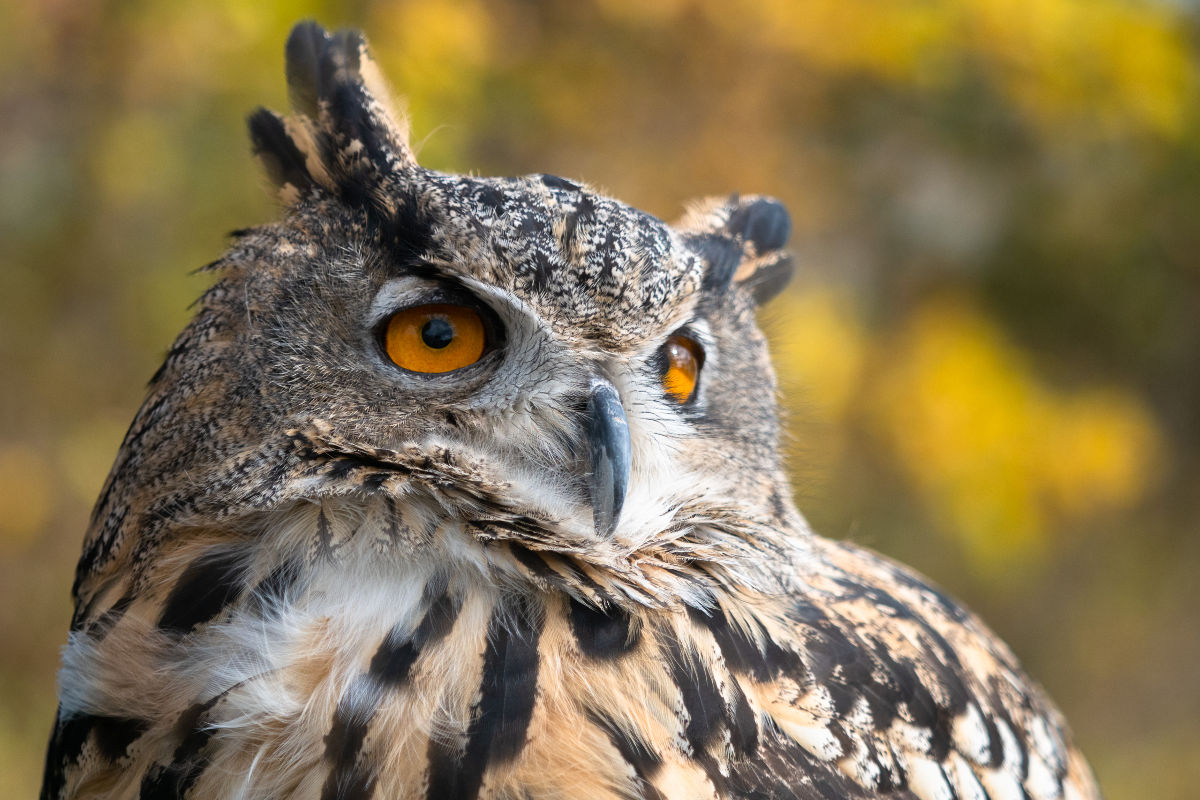
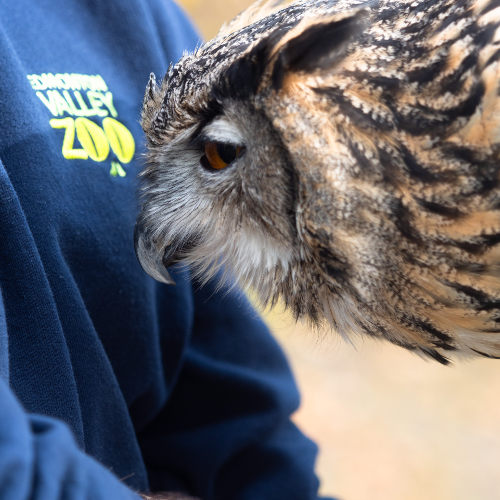
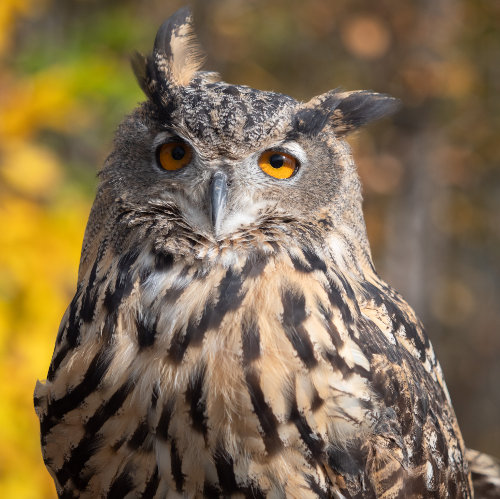
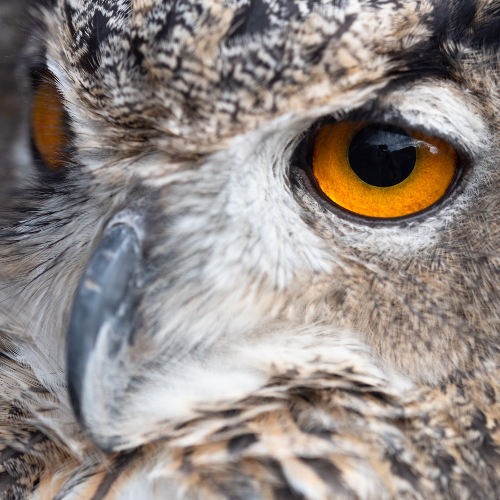
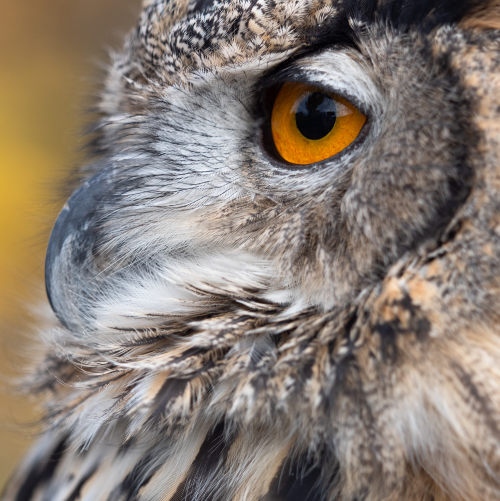
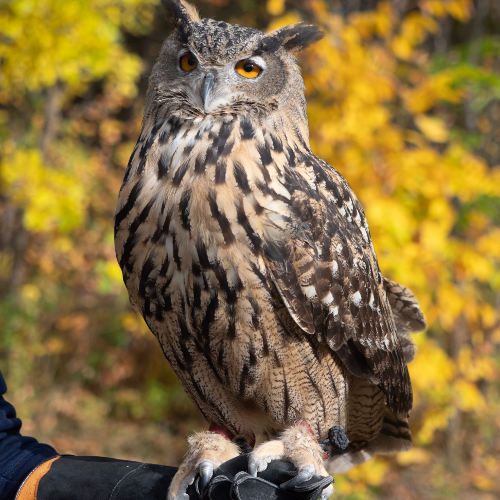
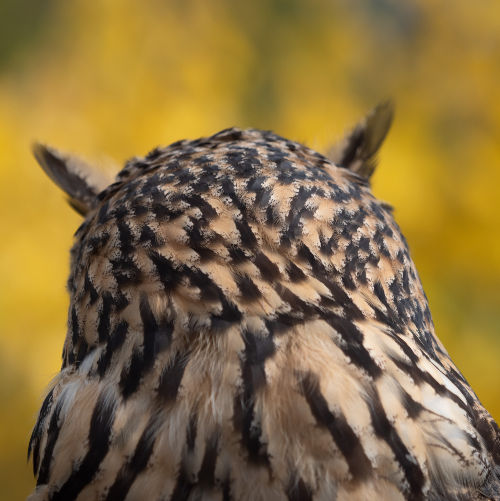




The Eurasian eagle owl, one of the largest owls in the world, boasts a wingspan up to two meters (6.5 ft.), and has prominent ear-tufts and vivid orange eyes. They have distinct individual vocalizations, from a deep booming “ooo-hu” to quiet guttural chuckling, and even bark-like screams. Every member of the population can be identified by its voice.
These birds are closely related to the great horned owls found in North America. They often build nests on the ground. Young owlets are able to fly within seven weeks but parents often continue to care for them for another six months. They are very sensitive to their environments; if there are not enough food resources, they will mate at a slower rate later into the year.
The Edmonton Valley Zoo is home to three Eurasian eagle owls – Howard, Vega, and Andry.
CLICK THROUGH THE TABS BELOW TO LEARN MORE!
Eagle owls are the largest owls in the world. Females can grow to a total length of 75 cm (30 in). Males are smaller.
Live in the diverse environments of Europe and Asia, from northern coniferous forests to grasslands and deserts.
Feeds on small mammals, birds, reptiles, amphibians, insects, and fish.
They tend to be nocturnal, with most of their activity happening in the hours around sunrise and sunset. Eagle owls are highly sedentary and rarely change territories within their adult lives.
Females lay one-six eggs and incubate them for 35 days.
Approximately 20 years in the wild; longer in captivity.
Have no natural predators but are threatened by the depletion of native prey numbers due to ongoing habitat degradation and urbanization. They are classified as least concern.


